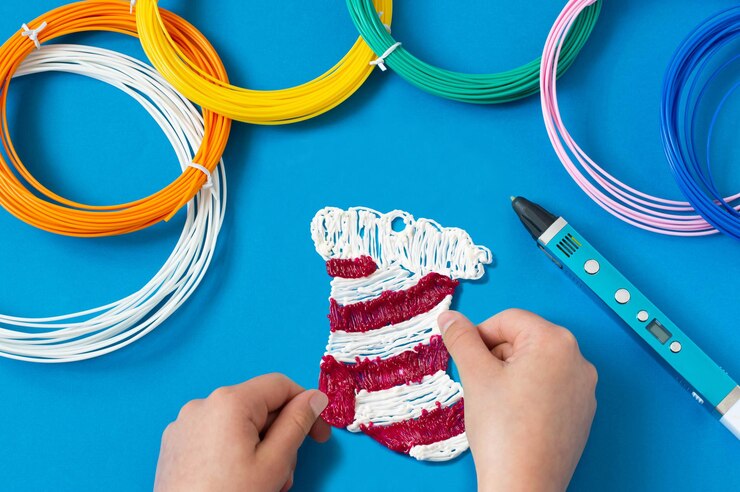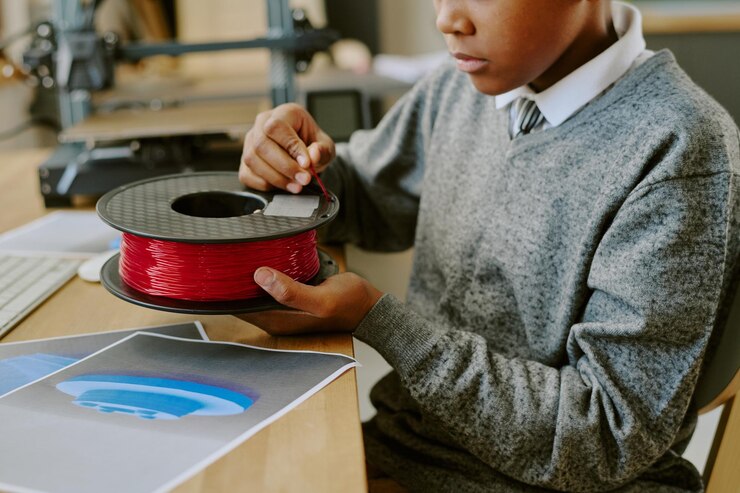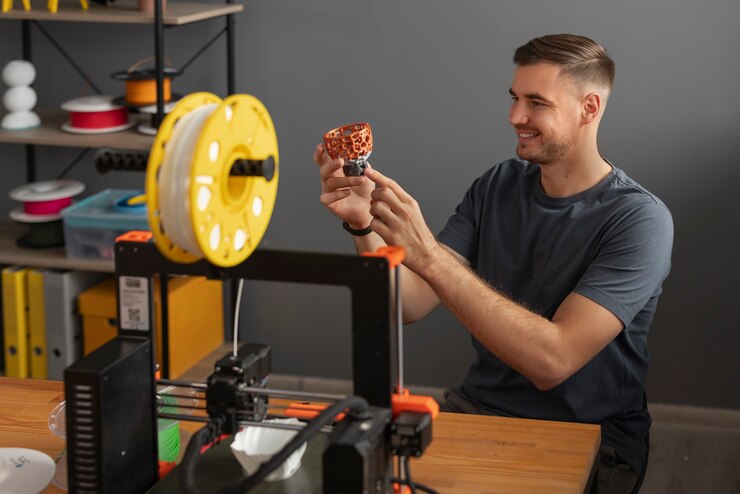Endless possibilities fill creativity could be found on creating custom parts, prototypes, functional components with the latest 3D printing technology. However, it is in its success about what filament the right choice will depend. Depending on the filament you use, the print can change in durability, flexibility, appearance, and functionality. But with so many choices, it can feel overwhelming to decide the right material for your project. In this guide, we will take you through the critical factors you need to consider to use to select the right filament for your 3D printed parts.
Familiarizing Yourself With The Different Kinds Of Filament
PLA (Polylactic Acid)
Ideal for: Beginners, aesthetic designs, prototypes
Advantages:
Easy printing with a low chance of warping
Biodegradable at Eco-Friendly
Available in multiple colors and finishes
Disadvantages:
Limited durability
Poor heat resistance
ABS (Acrylonitrile Butadiene Styrene)
Best for: Working prototypes, automotive components
Advantages:
Strong and impact-resistant
Able to endure hotter temperatures
Post processing with acetone is easy and gives a smooth surface
Disadvantages:
Prone to warping and cracking
Nozzle emits fumes when printing; needs adequate ventilation
Best Printer Settings for PETG (Polyethylene Terephthalate Glycol)
Best For: Food safe applications, robust parts
Advantages:
Strength and flexibility combined
Moisture & chemical resistant
Minimal warping
Disadvantages:
Prints more difficult than PLA
TPU (Thermoplastic Polyurethane)

Ideal for Flexible parts, phone cases, gaskets
Advantages:
Flexible and durable
Good resistance to wear and tear
Disadvantages:
Requires slower print speeds
Challenging for beginners
Nylon
Best for: Gears, Hinges, Industrial parts
Advantages:
Ultra tough and wear resistant
High heat resistance
Disadvantages:
Humidity susceptible; needs to be stored properly
Need to printed at high temperature
Key Factors to Consider
Application Requirements
The first step is knowing the function of your 3D printed part. Ask yourself:
Does the part have to withstand a mechanical load?
Does it take flexibility, or rigidity?
Ask whether it’ll be exposed to heat, moisture or chemicals.
PLA, for example, is great for decorative models but not a good choice for functional parts needing strength or heat resistance.
Mechanical Properties
Filaments possess unique qualities such as tensile strength, flexibility and impact resistance. Then, compare these features to identify one that suits you best for your project.
High strength: ABS, Nylon
Flexibility: TPU
Impact resistance: PETG, ABS
Printer Settings and Compatibility
Certain filaments do require particular printer capabilities. Check that your 3D printer suits the material’s temperature range and bed requirements.
PLA: Requires a temperature of 190-220°C and a minimum of bed
ABS: Requires a heated platform, prints between 220–250 °C
Nylon : Needs Bed Temperature 60 °C
Aesthetic Requirements
And if the final appearance of that last part matters, look for filaments that come in a large palette of colors, textures or finishes. For artistic prints, try specialty PLA variants such as silk PLA or wood PLA.
Environmental Impact
Biodegradable materials (PLA as an eco-friendly option). Do make sure you still are meeting the functional needs of your project.
Budget Constraints
Filaments can vary greatly in cost. PLA is by far one of the most economical whereas high-performance materials such as Nylon or carbon fiber-infused filaments are on the pricier side.
Specialty Filament Options for More Specific Applications
Carbon Fiber-Filled Filaments
Ideal for: Lightweight, high-strength components
Benefits: Better rigidity and strength
Cons: Can be abrasive; needs hardened nozzles
Wood-Filled Filaments
Best for: Decorative projects where a wood effect is needed
Pros: One of a kind aesthetic look
Disadvantages: Brittle, hard to print
Metal-Filled Filaments
Best for: Metal finishes or heavier parts
Pros: Looks great and realistic metallic appearance
Cons: Heavier, more destructive on printer parts
Filaments: Storage and Handling
Filament degradation due to poor storage can also cause people problems with print quality.
Store in airtight containers with desiccants.
Do not prolong sun exposure: UV will decline some filaments.
Track shelf life: Materials like Nylon have a relatively short shelf life and degrade faster than others.

10 Tips when Printing with Different Filaments
Printer Calibration: Check and adjust the less you can.
Test small: Save filament and wastage by testing settings on little prints to begin with.
Use suitable adhesives: Some filaments may benefit from a particular adhesive for better bed adhesion.
For more information on Filament for 3D printing; Future Trends
Innovations continue in the 3D printing materials space:
Eco-friendly filaments: Biodegradable and recycled materials are becoming more widespread.
Smart materials: Filaments that respond to stimuli by altering color, shape, or properties.
Contemporary composite materials: Applying more than one material characteristic to enhance specific variables.
Conclusion
Choosing an appropriate filament for your 3D printed parts is essential in order to obtain optimal resulting parts. So if you know the properties of each material, your needs for the project your working on, and the price/cost of the material assigned to your printer and equipment you could make a more informed decision on what your really looking for. Whether you’re making decorations or making replacement parts, you need the right filament to make it a success.
Best Filament for Newcomers?
PLA is the best filament for beginners since it is easy to print and inexpensive, making it the best choice for beginner projects, with very few challenges to printing.
What is the best filament for flexible parts?
When it comes to flexible parts, TPU is the best option available, boasting the best durability to elasticity ratio.
How do I store filaments to keep them in good condition?
Store filaments in sealed containers with desiccants to prevent them from absorbing moisture.
Are all 3D printers compatible with every kind of filament?
No, certain filaments have specific printer requirements, like higher temps or heated bed.
Have We Made Eco Friendly 3D Printing Filaments?
Yes, PLA is indeed biodegradable, and it is one of the most eco-friendly filaments you will find.






